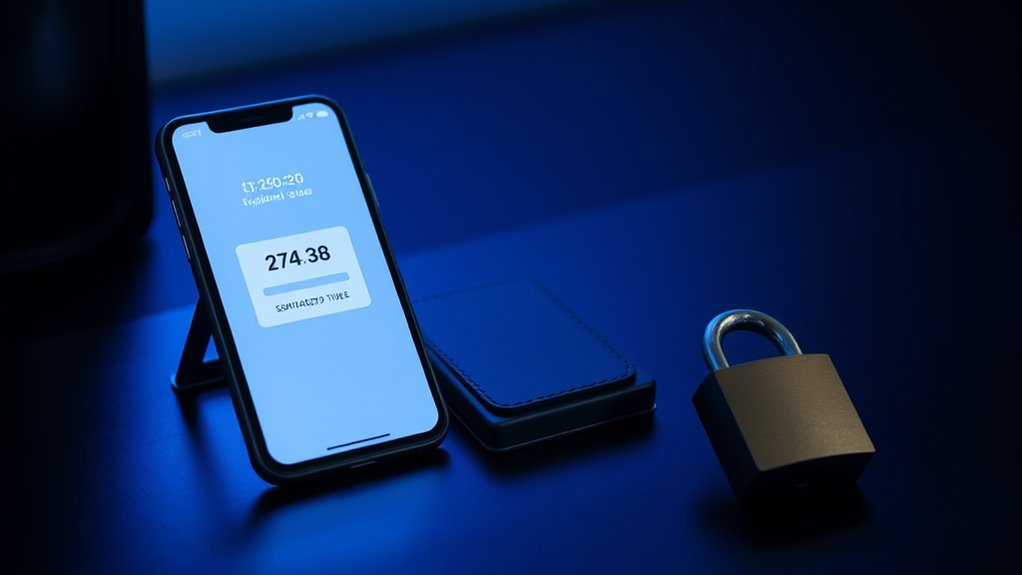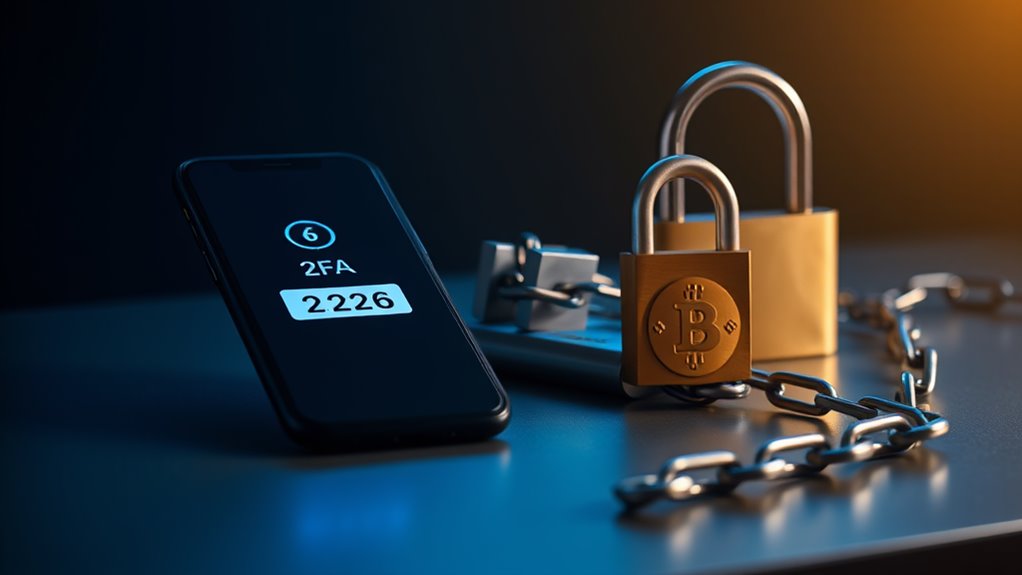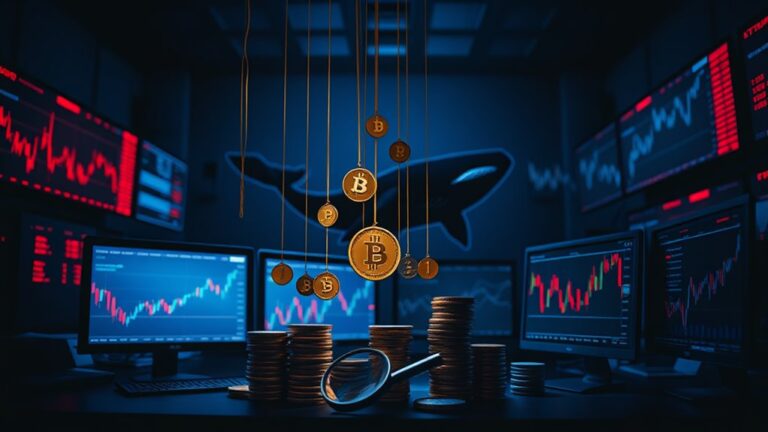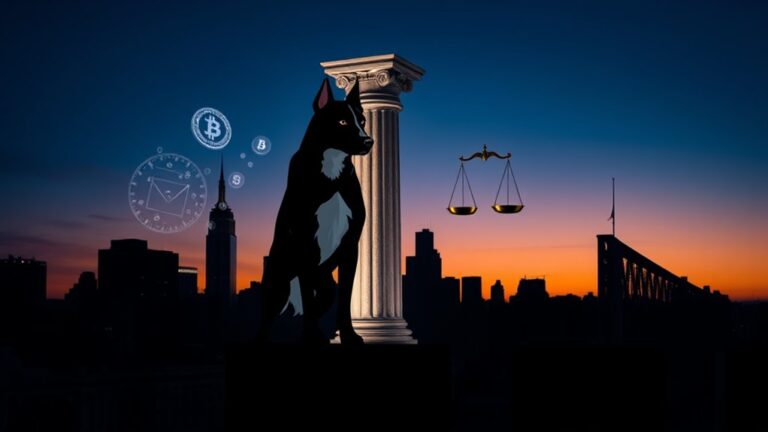Securing Crypto With Two-Factor Authentication
Note: This post may contain affiliate links, and we may earn a commission (with No additional cost for you) if you purchase via our link. See our disclosure for more info. The gold and crypto world is constantly changing. This is not financial, investment, legal, or professional advice. So, please verify the information on the gold and cryptocurrency provider’s websites.
Two-factor authentication (2FA) isn't just a snazzy option anymore; it's a must for securing crypto. Passwords alone? Weak. 2FA adds that critical layer of defense, requiring both something you know and something you have. It's like needing an ID to enter a club—too many peeps have to get in without a proper check. With 2FA, even if hackers snag your password, they hit a brick wall. Stick around, and you might be surprised by what else makes your crypto safer.

How secure is your crypto, really? If you think a strong password is enough, think again. Welcome to the world of two-factor authentication (2FA), where security gets a much-needed upgrade. This isn't just a trend; it's a necessary layer of protection in the wild west of cryptocurrency.
2FA requires not one, but two distinct verification methods. You'll need “something you know”—like your password—and “something you have,” which usually comes in the form of a code generated by an app or sent via SMS. So, it's not just about remembering a password anymore. You've got to juggle multiple forms of verification. Sounds like a hassle? It is. But it's a hassle worth enduring.
Every time you log in, 2FA generates unique, time-based codes. That's right. Each login attempt gets its own special code, rendering any old codes useless. That's like having a bouncer at a club who checks your ID every single time you try to get in. No ID? No entry. Simple as that.
Now, let's talk about why this matters. In the crypto world, one weak link can lead to disaster. A hacker might snag your password, but if they don't have that second factor, they're stuck out in the cold, shivering in their own incompetence. That's the beauty of 2FA. It's a secondary layer. A safety net. Without it, you might as well be inviting trouble into your digital wallet. Additionally, multi-factor authentication (MFA) offers even more robust security by using three or more factors to verify your identity. In fact, MFA significantly reduces unauthorized access risks by requiring multiple identification forms.
The reality is harsh. Crypto isn't as secure as you think. But with 2FA, you're giving your assets a fighting chance. You're not just relying on a single password, which is often the equivalent of using a Post-it note as your only line of defense. Platforms like Coinbase have implemented 2FA as part of their comprehensive security strategy to protect users from incidents like the 2021 hack that affected over 6,000 customers.
Frequently Asked Questions
What Are the Best Apps for Two-Factor Authentication?
Choosing the best two-factor authentication app? It's a jungle out there.
2FAS is open-source and has cool offline features.
Authy? It syncs across devices like a champ, but don't forget that encrypted cloud backup.
Google Authenticator is free but has no cloud backup—good luck with that!
And Microsoft Authenticator? Push notifications galore.
Duo Mobile? It's for the big leagues.
Each has its perks and quirks, so pick wisely and secure your digital world.
Can I Use Two-Factor Authentication on Multiple Devices?
Absolutely, two-factor authentication can be used on multiple devices. Just grab the same authenticator app and set it up on each device.
Scan a QR code, sync those codes, and boom! You're rolling in 2FA security.
But, watch out! If you lose the QR code, you're locked out faster than you can say “oops.”
How Do I Recover My Account if I Lose My 2FA Device?
Losing a 2FA device? Tough luck. First, check for backup codes stashed somewhere.
If those are gone, get ready to jump through hoops. Email verification, ID uploads—oh joy! Some platforms even ask for security questions or trusted contact approvals.
After you finally regain access, don't forget to update your 2FA. Yup, the fun never ends.
Withdrawal holds? Just a friendly reminder that patience is a virtue. Good luck!
Is Two-Factor Authentication Foolproof Against All Cyber Threats?
Two-factor authentication isn't a magic shield.
Sure, it blocks a whopping 99.9% of attacks, but it's not invincible. Phishing attempts can still sneak through, and don't get started on SIM swaps.
Users often disable it, thinking they're too clever. It's like locking your door but leaving the windows wide open.
Does Two-Factor Authentication Slow Down My Login Process Significantly?
Two-factor authentication? Yeah, it adds a bit of time to your login.
But don't freak out! Authenticator apps spit out codes faster than you can blink.
SMS? Sure, there's a chance of delays—thanks, cell towers. Biometric scans? Quick as a flash.
Overall, the security bump is worth a few extra seconds. Studies show it doesn't seriously mess with productivity.












